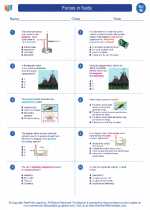Heredity
Heredity is the passing on of traits from parents to their offspring, either through asexual reproduction or sexual reproduction. These traits can be physical characteristics, such as hair or eye color, or they can be related to specific genetic conditions and susceptibilities to certain diseases.
Key Concepts
- Genes: Genes are the basic units of heredity. They are made up of DNA and serve as instructions for building and maintaining the body.
- Chromosomes: Chromosomes are structures within cells that contain the genetic material. Humans have 23 pairs of chromosomes, with one set inherited from each parent.
- Dominant and Recessive Traits: Some traits are dominant, meaning that only one copy of the gene is needed for the trait to be expressed. Recessive traits, on the other hand, require two copies of the gene for the trait to be visible.
- Genetic Variation: The process of meiosis and sexual reproduction leads to genetic variation in offspring, as each parent contributes a unique set of genes to their offspring.
- Mendelian Genetics: The principles of heredity first described by Gregor Mendel, such as the law of segregation and the law of independent assortment, provide a foundation for understanding inheritance patterns.
- Genetic Disorders: Some traits and conditions are inherited due to genetic mutations, which can lead to genetic disorders. These can be caused by mutations on individual genes, or by chromosomal abnormalities.
Study Guide
- What are genes, and how do they contribute to heredity?
- Explain the difference between dominant and recessive traits, providing examples of each.
- How does genetic variation occur in sexually reproducing organisms?
- Describe Gregor Mendel's contributions to the understanding of heredity.
- What are some examples of genetic disorders, and how are they inherited?
Understanding heredity is crucial in fields such as genetics, medicine, and evolutionary biology. By grasping the fundamental principles of heredity, we gain insight into how traits are passed from generation to generation and how genetic conditions can arise.
.





